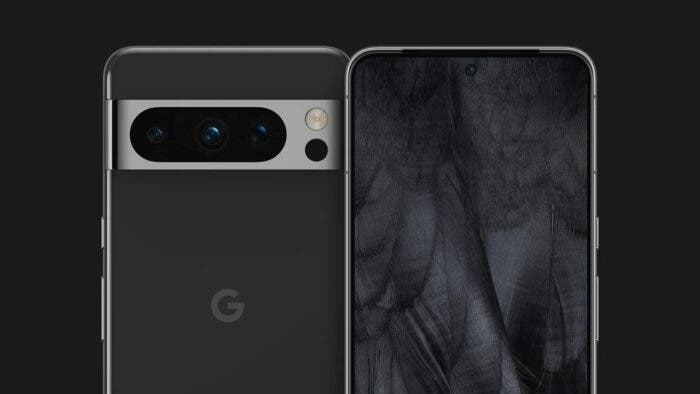No matter what you say, there’s no denying that Google has packed some good displays on its last few Pixel devices. For example, consider the Pixel 7 Pro, which came with a very well-calibrated display. However, it was criticized for not being bright enough in some scenarios. Well, Google Pixel 8 has improved in that regard.
And it’s not just the brightness of the display that sees an upgrade in Google Pixel 8. According to a source inside Google, the new lineup features brand-new display techs to ensure you get the best viewing experience from the phone. In other words, a lot has changed from the displays from the previous Pixel devices.
Compact Size for Pixel 8 and Flatter Display for 8 Pro
Your idea of the perfect phone size may vary from the others. After all, it has been an ongoing debate for years. But regardless of what you might think, the Google Pixel series usually come in two sizes at launch. The non-Pro model tends to be 6.3 inches, while the Pro model comes with a 6.7-inch display.
That gives users a choice between a small and a large-sized phone. But Google is tweaking the formula a little with the Pixel 8 series. The non-Pro model is 6.17 inches instead of 6.3 inches. This makes the standard model more pocket-friendly and compact in size.
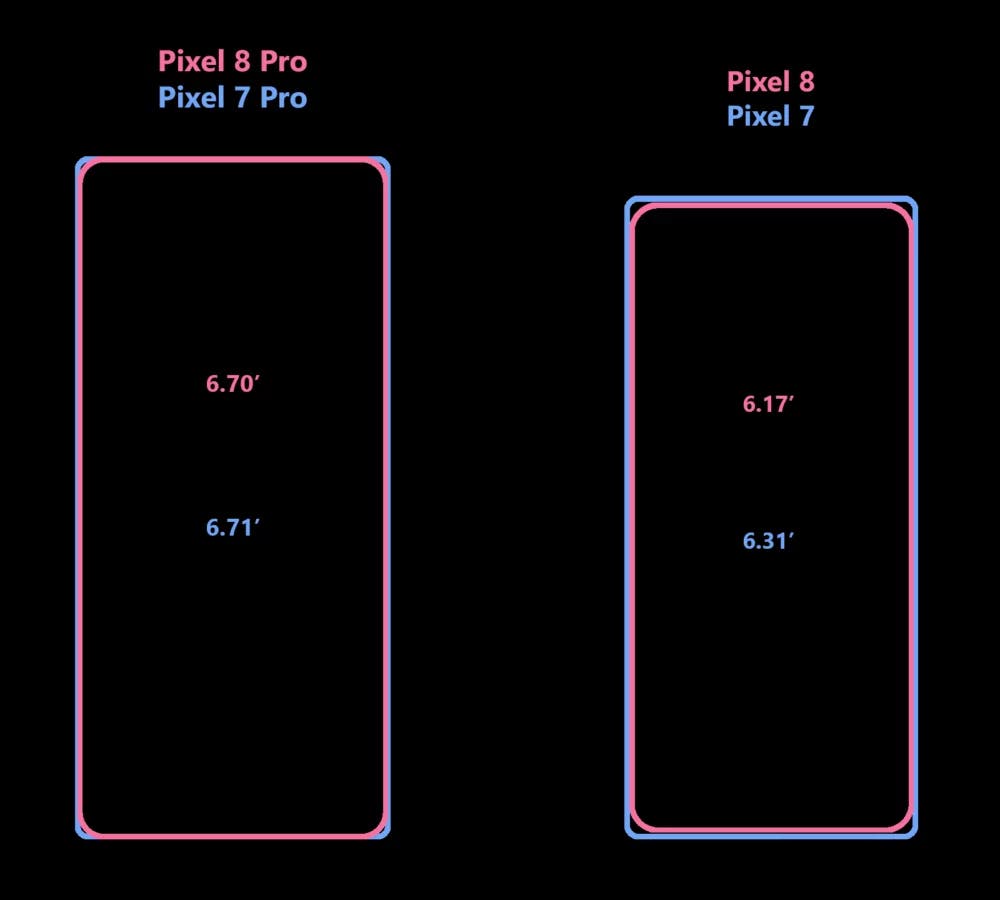
On the other hand, the Pixel 8 Pro retains the same 6.7-inch screen as the predecessor. But there’s a piece of good news for those who love to flat displays on flagships. The panel on the Pro model is flatter than the Pixel 7 Pro!
Other than that, Google has fine-tuned the corners of both modes. The displays are slightly less square than the predecessor, which should enhance the ergonomics of the devices.
Brighter Displays for Better Outdoor Viewing
In the past, Google has always stuck with OLED displays for its Pixel devices. And the Pixel 8 series is not an exception in that regard. But, Google has changed the manufacturer of the panels. For the last couple of generations, Google has relied exclusively on Samsung for displays.
In comparison, the Google Pixel 8 Pro has a panel from Samsung, but the standard phone currently has two display sources: Samsung and BOE. While the Google insider did not confirm whether the phones will ship in two versions, both panels share the same specs.
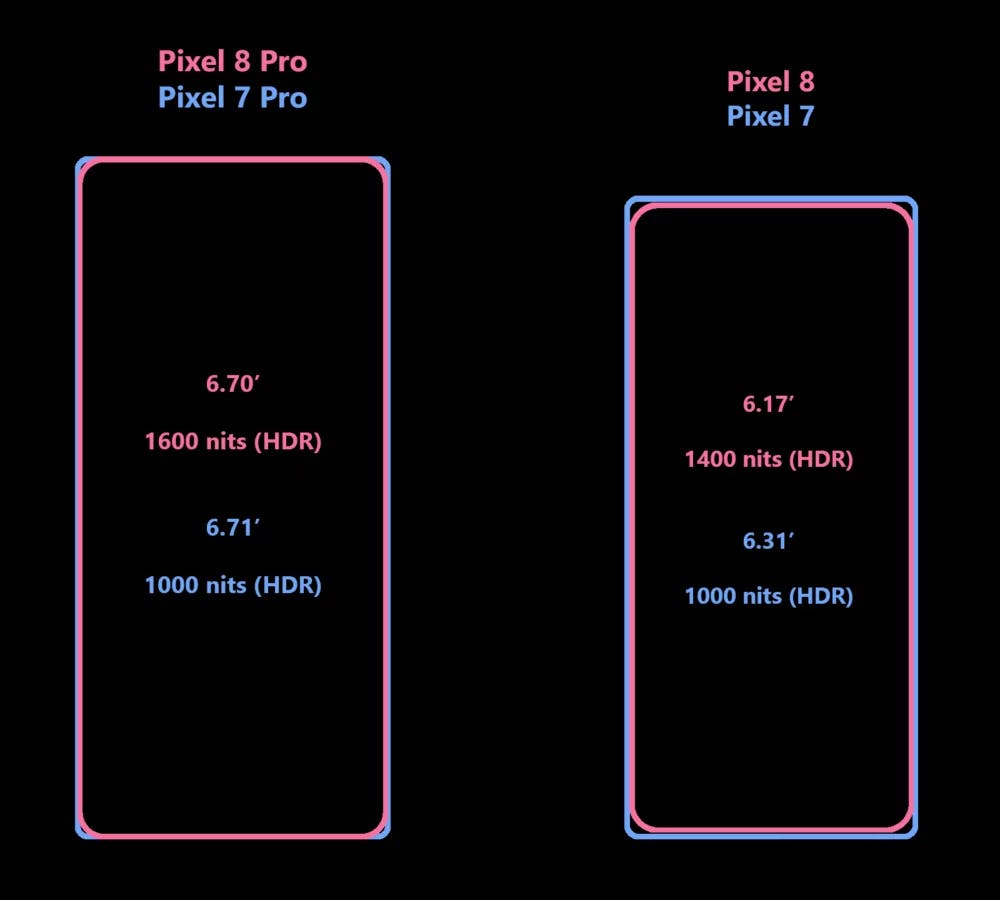
But the question is, how do the displays compare with Pixel 7 series? Well, Google has opted for displays that come with significantly improved brightness. According to the values declared in the code, the non-Pro Pixel 8 mode can achieve up to 1400 nits peak brightness in HDR content. And the Pro model can go up to 1600 nits.
Gizchina News of the week
In comparison, the Pixel 7 and Pixel 7 Pro could only reach 1000 nits in HDR content. This brightness upgrade in the Pixel 8 devices will make the displays more visible in bright outdoor conditions.
Slightly Lower Display Resolution On Pixel 8 Pro
When it comes to the display resolution, the Pixel 8 has the same numbers as the Pixel 7. That is, it has the same 2400×1080 resolution as its predecessor. However, the Pro model on the new series saw a slight downgrade. Its display resolution is 2992×1334 pixels. In comparison, the Pixel 7 Pro has 3120×1440 pixels.
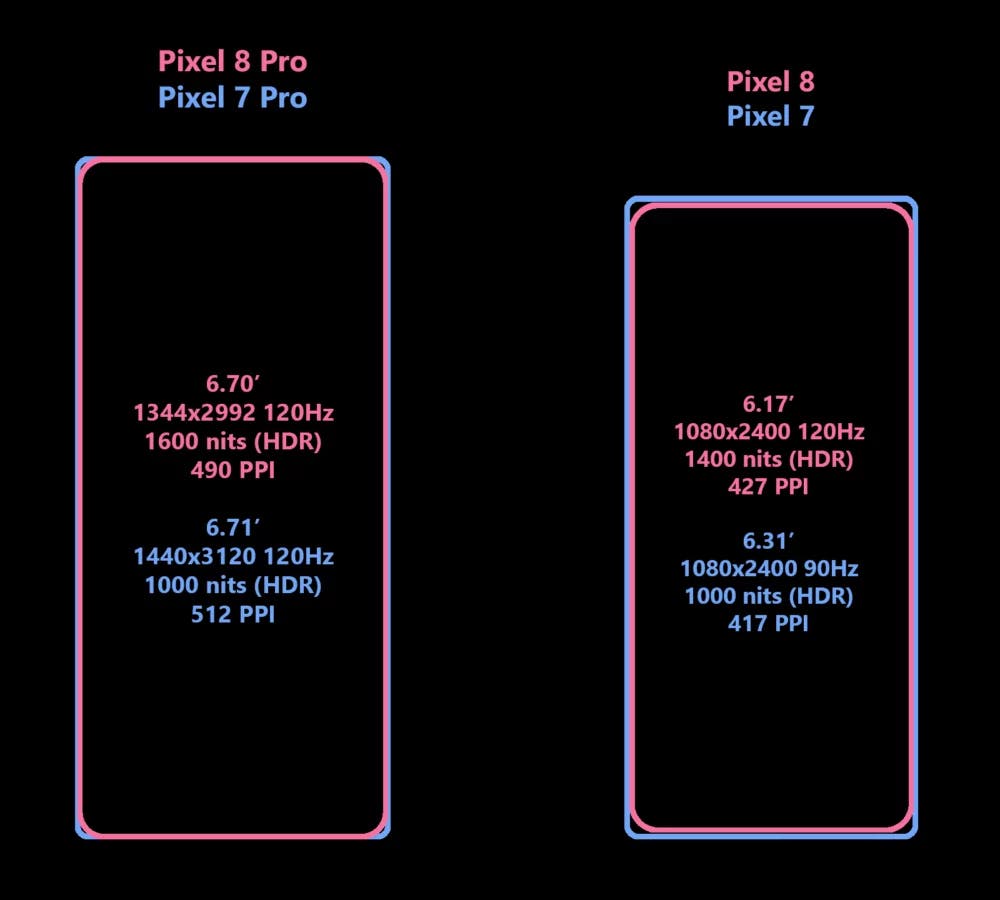
But in my opinion, this small downgrade in the display resolution will not be that noticeable. Even with a little lower resolution, the PPI (Pixels Per Inch) of the Google Pixel 8 Pro is 490, which is considerably high. So, you can expect to get sharp and detailed images on the phone.
Enhanced Variable Refresh Rate
Ever since the Pixel 6 series, Google has utilized refresh rate as one of the main differentiators between the Pro and non-Pro models. For example, the non-Pro Pixel 6 model has a 90Hz display, while the Pixel 6 Pro has a 120Hz display. The Pixel 6a, on the other hand, came with a 60Hz panel.
Google made a change with the Pixel 7 series as it recently brought out the Pixel 7a with a 90Hz panel. That makes the low-tier option of the series better compete with the middle-tier option. Now, for Pixel 8 series, Google has rewidened the gap. Both the Google Pixel 8 and Pixel 8 Pro comes with 120Hz displays.
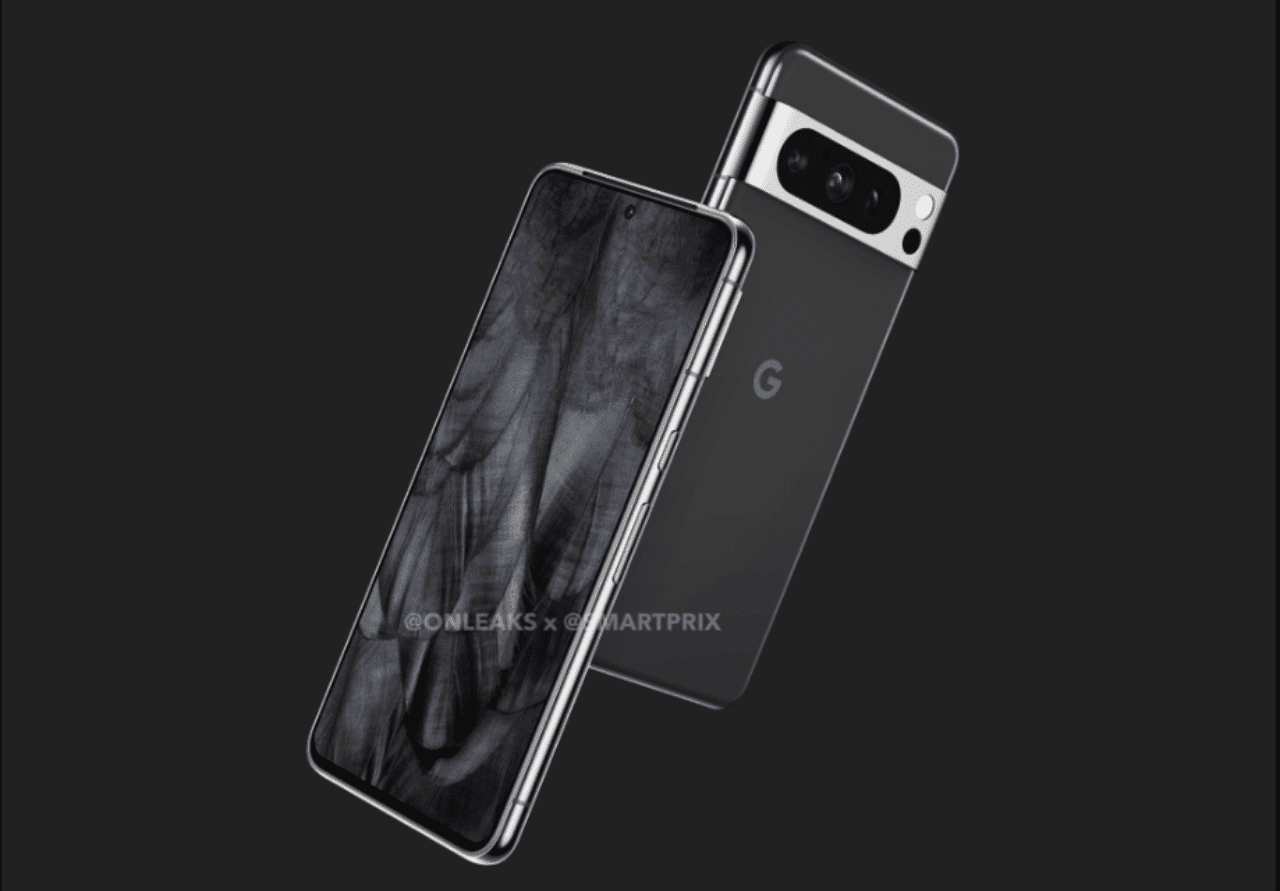
So, what differentiates the displays of the Pro and non-Pro model of the Pixel 8 series? Well, Google has integrated variable refresh tech on the Pro model. It can smoothly change between 60Hz and 120Hz, which will enhance the battery life and offer a smooth overall experience.
The variable refresh rate was present in the previous Pixel models. But those phones can only shift between a couple of predefined refresh rates. That resulted in a little choppy experience on the software side. Also, you get a lot of screen tearing when the displays change the refresh rate.
Also, new displays can lower the refresh rate down to 5Hz, which should substantially boost the battery life.
Final Thoughts
That’s pretty much everything we know about the Google Pixel 8 series display. And as you can tell, Google has upped its display game to better compete with other Android flagship devices. And if you missed it, we got the camera specs of the series from the same source. Check it out if you want to see whether Google offers camera upgrades on the new series.

